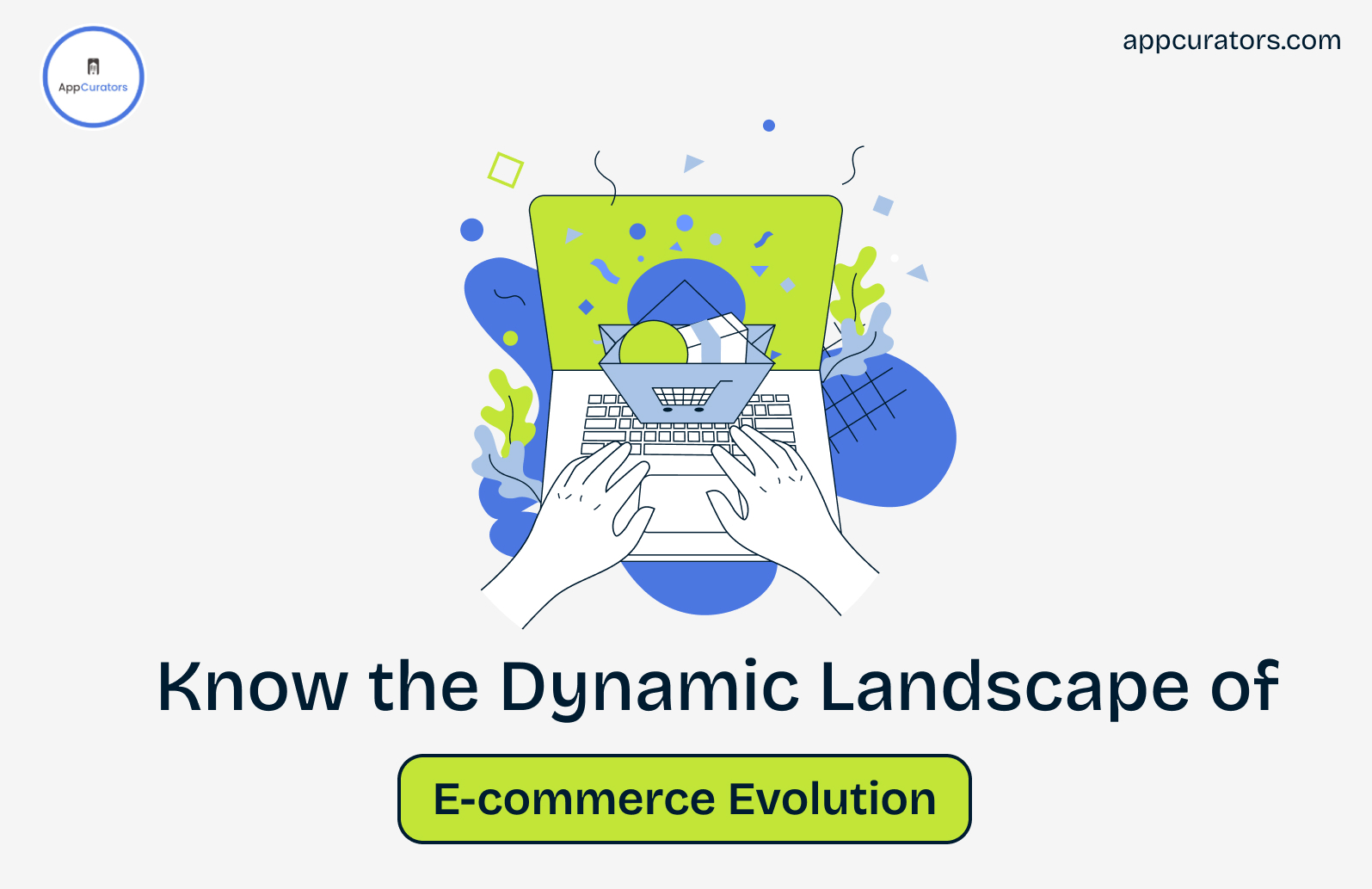Understanding the Dynamic Landscape of E-commerce Evolution
E-commerce defines itself as the buying and selling of goods and services via the Internet. It harnesses the vast data of consumers and producers to participate in the online market and deal with a variety of integrations, payment tools, and tech pathways.
A report says that globally, 71% of businesses are having a website in 2023, and e-commerce sales are expected to grow 8.8% in 2024. It indicates the pool of opportunities for the sellers.
In recent years, e-commerce has gone through a lot of innovations, and it’s necessary to settle with the changes to meet the end goal of consumers.
Augmented reality: This technology has taken the first seat in the marketing game. Sellers are more intended to keep AR, to give the best shopping experience to their customers. By this step, shoppers have a clear picture of the product and its value to pay for.
Digital Optimization: With the help of these techniques, e-commerce website solutions are being developed. It’s been crucial to hook the audience with your products and services. Having an e-commerce website is another thing but getting conversion out of it is a difficult task. Sellers need to be attentive to the latest industry trends, consumer behavior, and their best shopping experiences.
Chatbots: Here chatbots are working as salespeople, who are looking for customers who have queries regarding the products or the process. Chatbots are available throughout the shopping process to make you feel connected with the product.
Evolution of e-commerce websites from their early beginnings
eCommerce has its roots dating back to the beginning of the internet. It is evident that online shopping was invented by Michael Adrich in the United Kingdom in 1979. He was the very first to create multi-user transactions through a computer and a telephonic line. In the next year, this system floated into the market and was sold across Europe to B2B businessmen.
Let’s have a quick look at the eCommerce timeline:
- Launch of the Boston Computer Exchange in 1982 (it was an online marketplace for people who were willing to sell their goods, such as used computers).
- The very first e-commerce marketplace was launched in 1992 under the domain of Books.com.
- Marc Andreessen and Kim Clark launched the world’s first web browser, gaining popularity as Netscape Navigator, which was the primary browser during the 1990s.
- The landmark launch of Amazon (the world’s largest eCommerce marketplace) in 1995.
- In the same year, SSL was launched with the vision of secure sales.
- The launch of PayPal for the online payment process was brought to the table in 1998. Later, it merged with Elon Musk’s online banking company in 2000.
- The launch of Alibaba set the record and quickly became the largest online eCommerce company in 1999.
- Google came to the market and launched Google Adwords. In 2000, it was the first time that traditional retailers advertised their products on google searches.
- In 2004, Shopify launched, and lists have continued till now.
- BigCommerce, launched in 2009.
- In the same year, Amazon acquired Zappos for $1.2 billion.
- Facebook opened for advertisements, which captured the attention of consumers.
- Apple Pay launched in 2014, and there are step ups in the eCommerce marketplace.
- This industry saw a boom during and after COVID-19. It pushed consumers to go ahead with online shopping and payments.
The role of IT in advancing eCommerce platforms
IT has played a major role throughout the development journey of the eCommerce marketplace. With the latest technologies called AI,and iOT, blockchain has the ultimate impact on this rapid growth. Automation accelerates the efficiency of day-to-day operations. Such as delivering the product on the same day or next day, time tracking features to track the parcels, and more. Technology also encompasses personalization, scalability, and data driven-insights. It continuously focused on the customer experience. Payment integration boosted sales by giving customers the option of selecting payment methods and platforms. The shopping experience has become like a bed of roses, where everything is systematic, with a variety of options with a single click.
Where it may take eCommerce by 2030
According to the Invest India report, India is projected to hit $325 billion by 2030, encouraged by 500 shoppers and robust internet penetration. E-commerce website development is booming and small-scale businesses are opting to use Shopify Marketplace to showcase their catalogs.
Other drivers of this boom are the rise of smartphones, affordable data plans and UPI dominance, which makes it possible to shop online.
Conclusion
In a nutshell, it’s right that the Indian atmosphere, and increasing needs, and changing consumer behavior are driving the eCommerce industry to its zenith. The integration of AI has significantly fueled this transformation.
The digital landscape continues to evolve and expand, presenting new opportunities for exploration. Now, it’s imperative to observe where this growth will take the world.









